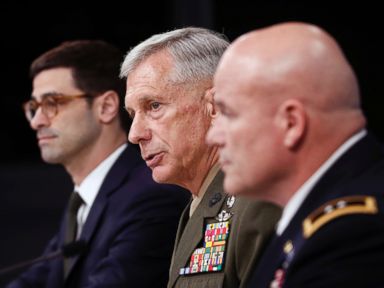
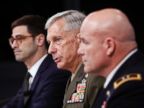

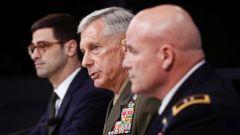
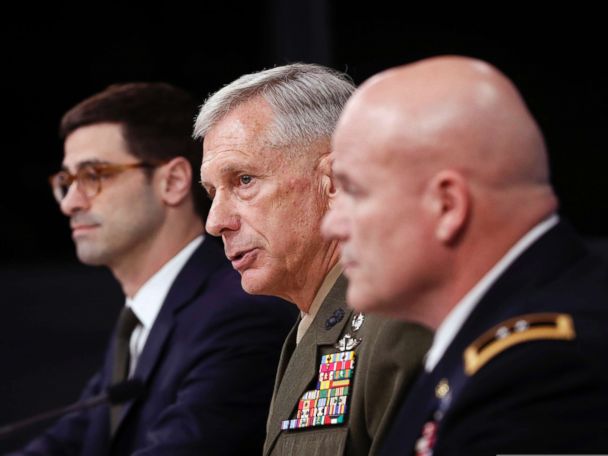
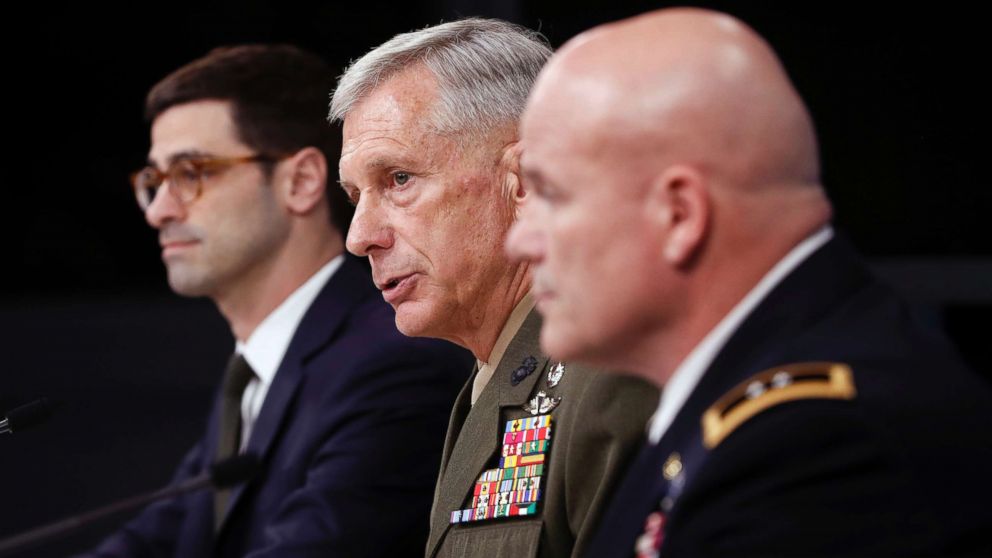

An exhaustive U.S. military investigation into the deaths of four American soldiers in a deadly ISIS ambush in Niger last October found that their mission had been approved without proper authorities and that their unit had not been fully trained for their mission in Niger.
In the wake of the report’s findings made public Thursday, Defense Secretary James Mattis has ordered changes to address the shortfalls in training and authorities uncovered by the report.
The months-long investigation presented the first complete narrative of the circumstances surrounding the deadly ambush in northern Niger on October 4 that killed Staff Sgt. Bryan C. Black, Staff Sgt. Dustin M. Wright, Staff Sgt. Jeremiah W. Johnson and Sgt. La David Johnson.
They were part of a team of Green Berets accompanying a platoon of Nigerien soldiers that were ambushed as they left the village of Tongo Tongo close to the border with Mali.
How they got to Tongo Tongo in the first place has been a question of open debate in the months since the attack.
Investigators from U.S. Africa Command said that the 12 members of the team, that had arrived in Niger just weeks before, had never really trained as a full unit prior to their deployment.
The investigation found that on October 3 the team had set counter-terrorism of Oualllam on a counter terrorism operation targeting a top leader of ISIS in the Greater Sahara that operates along Niger’s border with Mali.
According to a summary of the Africa Command investigation, the commander of Team Ouallam and his company commander “inaccurately characterized the nature of the mission” in the mission plan presented to a higher ranking officer.
In turn, that commander, a captain, approved the mission plan “based upon an incorrect belief that he had the authority to do so.” But in fact the counter terrorism mission to kill or capture the ISIS leader should have been approved by a higher-ranking officer, a Lt. Colonel stationed in Chad.
The joint U.S.-Nigerien team did not find the ISIS leader in the town of Tiloa and instead carried out a “key leader engagement with a partner force commander.”
As the team left Tiloa bound for their base in Ouallam, the Lt. Colonel in Chad ordered them to participate in a second kill or capture mission targeting the same ISIS leader at a location further north.
Their new mission was to support a second special operations team that was to actually carry out the kill or capture mission. But bad weather forced the second team’s helicopters to turn back.
According to the report’s summary, the commander in Chad “ordered Team Ouallam to execute the mission. The mission was unsuccessful in capturing the target.”
ABC News has previously reported that in this portion of the mission the Green Beret team carried out intelligence reconnaissance of an abandoned campsite it was believed the ISIS leader had recently visited.
With the completion of that mission, the joint U.S.-Nigerien patrol headed to their home base in Ouallam.
But because the Nigerian troops needed water, the joint patrol stopped in the village of Tongo Tongo.
After a stay in the village, that ABC News has previously reported lasted 90 minutes, the convoy of U.S. and Nigerien forces left Tongo Tongo at 11:40 am. The investigation found there was insufficient evidence to conclude that the villagers were complicit in the ambush.
The joint patrol was immediately attacked south of the village by a force of more than 100 ISIS fighters.
The investigation found that the convoy of five Nigerien vehicles and three American vehicles received small arms fire from a wooded area. At that point, the team commander radioed to his higher headquarters “troops in contact,” a message that led to the deployment of additional ground forces and aircraft that did not arrive until hours later.
What followed was a nearly two hour-long battle where at various times the American team was separated as their vehicles withdrew from several positions where they were taking “overwhelming” enemy fire.
Black, Johnson and Wright were killed close to the scene of the initial location as they withstood withering enemy fire.
Johnson was killed 1.5 kilometers from that location after he heroically held off ISIS fighters as long as he could.
Search teams did not find his remains for two days following the battle because his last location was outside the original search area.
The investigation praised the heroism of the soldiers killed and wounded in the ambush “and their actions should be reviewed for appropriate recognition.”
Investigators concluded that there were “contradictory and ambiguous” issues at various levels of command that “resulted in confusion regarding the proper approval” for the team’s initial mission plan.
Defense Secretary Mattis agreed with the report’s recommendations to establish “clear and unambiguous guidance for the planning and approval of military operations, conducting a holistic review of certain equipment requirements, ensuring appropriate turnover procedures within the theater, and certain acts with respect to coordinating support from partner nation forces.”
Mattis also gave the Department of Defense, the Army and U.S. Special Operations Command 120 days “to address systemic issues brought to light by this investigation.”
They include reviews of current training and policies for the training of partner forces as well as policies that could affect military units from not training together fully as a unit prior to a deployment.

